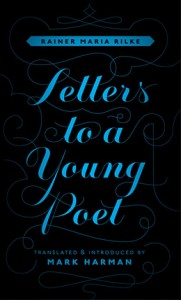“When Nietzsche Wept” – Irv Yalom’s book is still a fascinating read. The 2007 movie? Not so much.
Monday, March 18th, 2019The stack of books I mean to read gets taller by the day. One of the volumes that has been there for quite some time is a book by a friend – Irvin Yalom‘s celebrated When Nietzsche Wept. It was the toast of Vienna for its annual Ein Stadt. Ein Buch event a decade ago – and also the subject of the second Book Haven post ever. (I discuss the retrospective on his career as a psychiatrist, Yalom’s Cure, here.) Yet the book itself remains right there, stubbornly atop of one of the precarious ziggurats that surround my desk.
So, on a cheerless weekend night, imagine my surprise to find out the 1992 book has already been made into a 2007 film, starring Armand Assante and Ben Cross. Let me dissemble no more, gentle reader, I put aside my pressing deadlines to watch it online – and that returns me to Friedrich Nietzsche, Sigmund Freud, and the book. I didn’t know the beginnings of psychoanalysis with the “talk treatment” of Dr. Josef Breuer, nor the details of the overlapping lines of thought in fin-de-siècle Vienna.
The Stanford professor offers this disclaimer in his author’s note: “In 1882, psychotherapy had not yet been born; and Nietzsche, of course, never formally turned his attention in that direction. Yet in my reading of Nietzsche, he was deeply and significantly concerned with self-understanding and personal change.”
But history is a series of close calls and what-might-have-beens. This book was born in the discovery of a letter: an 1878 message where a friend tries to get Nietzsche to come to Vienna to see Dr. Breuer for treatment.
Author Yalom continues:
Friedrich Nietzsche and Josef Breuer never met. And, of course, psychotherapy was not invented as a result of their encounter.
Nonetheless, the life situation of the major characters is grounded in fact, and the essential components of this novel—Breuer’s mental anguish, Nietzsche’s despair, Anna O., Lou Salomé, Freud’s relationship with Breuer, the ticking embryo of psychotherapy—were all historically in place in 1882.
Friedrich Nietzsche had been introduced by Paul Rée to the young Lou Salomé in the spring of 1882 and, over the next months, had had a brief, intense, and chaste love affair with her. She would go on to have a distinguished career as both a brilliant woman of letters and a practicing psychoanalyst; she would also be known for her close friendship with Freud and for her romantic liaisons, especially with the German poet Rainer Maria Rilke.
Read more from Irv here.
As for the film, I don’t recommend it, but I do point it out. (The excellent youtube clip below is one of the films best moments.) In general, accents and orchestration are obtrusive (Brahms‘s Requiem, bits of Wagner here and there, and I can’t remember what else), the dream sequences clownish. The females are badly miscast and underfed, given the curvacious standards of the period. The casting is made with a modern eye to beauty, so the hairstyles and makeup concede too much to our own times and so are jarring. We shake what we’ve got: the women have no internal qualities, but are happy to roll their eyes and their hips. Someone should have looked at a real-life portrait of the time – Salomé’s, for example. If she could hold Rilke’s attention, I suspect that there was more to her than this manicured floozy. The exception to this rule is Breuer’s stiff, estranged wife, played by Joanna Pacula, who has a great final scene where a flicker of hope rekindles beneath the years of mistrust.
One of the best parts of the film are in the credits afterwards: we learn that Crazy Berthe, Beuer’s patient and Freud’s “Anna O.”, in fact becomes a groundbreaking social worker, while Salomé becomes an important early psychoanalyst. Breuer gives up his “talk therapy” – but Freud picks it up. Nietzsche takes the train to Switzerland where he will write Thus Spake Zarathustra. And Lou Salomé… well, we’ve all read Rilke’s letters…







